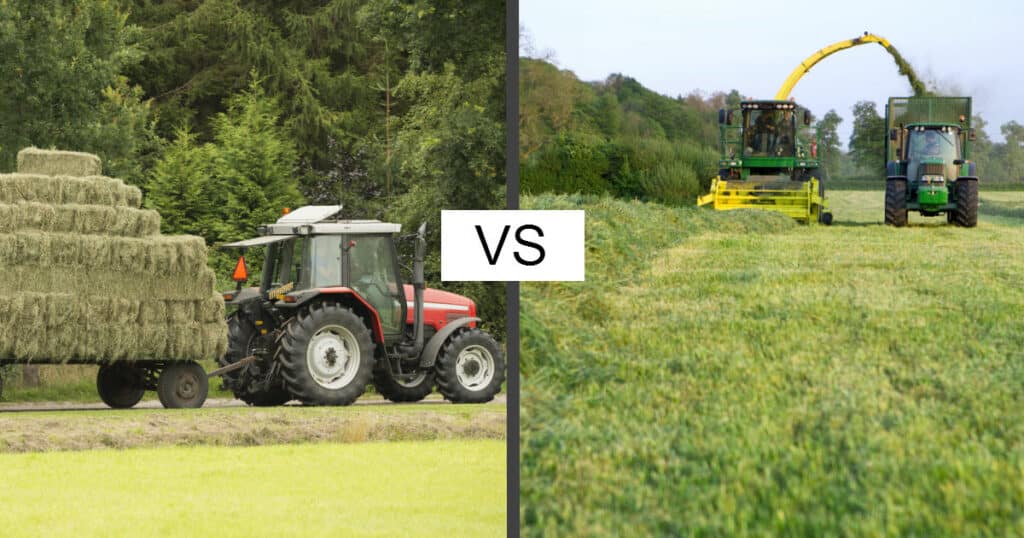If you’re new to farming, you may be wondering what is the difference between hay and silage? While both products are generally made from grass and are used for feeding sheep and other livestock, there are key differences in preparation, storage, ease of digestion, and nutritional value which you must understand and remember when comparing hay vs silage.
In this article, I will look at how these winter food sources for sheep are produced and stored. I’ll also discuss their nutritional value so you can make a decision about which product may work better as a food source on your farm when grasslands are not available to your flock of sheep.
How is Hay Made and Stored?
Hay is simply grass that has been cut and dried in a field. Once it has reached a dry matter level of at least 85 percent, it is packaged in bales and then stored.
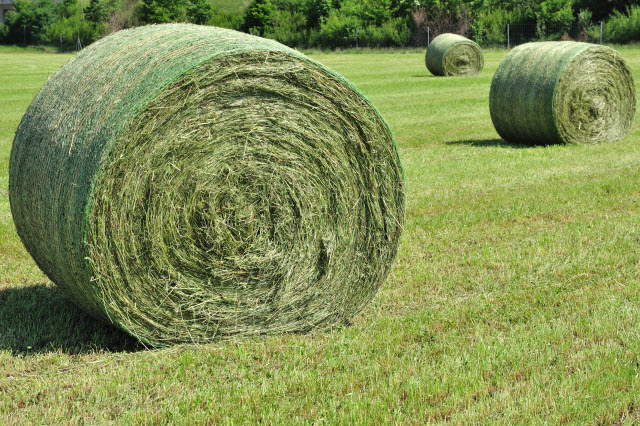
The drying process for hay takes time. The cut grass must be left in the field for the sun to dry it to the correct level. After that, farmers will use a rake to gather the hay into things arrangements called windrows. After that, hay is put into bales.
Grass plants are left to grow to maturity before they are cut to make hay. The whole process, of course, starts with planting the grass. First test the soil to find out if you need to add any fertilizers for optimal growth and nutrition. Also try to get rid of as many weeds as you can in the ground. Weeds will especially cause difficulties with plants such as timothy, clover, and alfalfa.
Sometimes there will be a field or fields that are kept especially for making hay. In this case, you wouldn’t have to do annual re-planting. There are other situations, however, when a farmer uses the same fields for different crops each year.
Never Confuse Hay with Straw
This is an important note and it’s something that non-farmers and people not living in rural areas don’t realize. Hay and straw are two entirely different things. Hay is fed to animals, while straw is not. Straw offers virtually no nutrition at all, and it’s typically used for livestock bedding, or for mulch in garden beds.
An easy way to recognize and differentiate between the two is to remember that hay, which you feed to animals, is green. Straw, that you don’t feed to animals, is yellow or golden in color.
How is Silage Made and Stored?
The process of making silage is a little more difficult and time-consuming than hay. However, you are able to make it using grass with much higher moisture levels than you could if you were making hay.
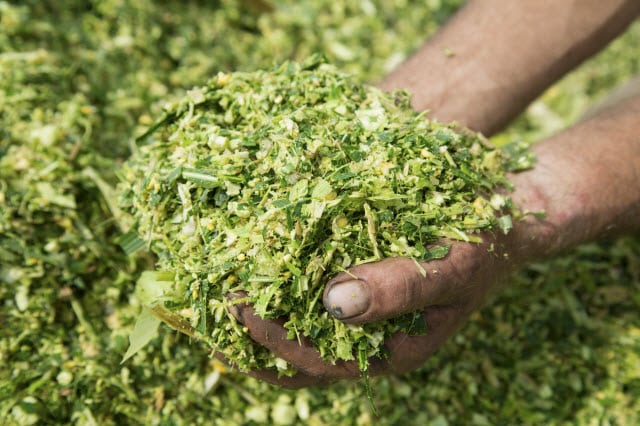
Making hay involves letting cut grass dry in a field, and it’s impossible to do this and reach the required 85 percent dry matter level if the weather will not cooperate (for example, if there is frequent rain). In these cases, farmers find it useful to be able to make silage. After all, the grass used to make silage usually has between 62 and 68 percent moisture. It only needs to be between 32 and 38 percent dry matter.
Whereas hay is preserved by way of its dryness, silage is preserved by excluding all oxygen from the bale. Several layers of a special plastic wrap are used to seal the silage bale to accomplish this. The process of making and storing process preserves nutrients in a way comparable to hay.
Many farmers find having silage on hand for feed during dry seasons. Silage is a fantastic energy source for your animals. After making silage, you will need to wait at least between 10 days and three weeks before feeding it to your animals. Why? It’s because the preservation of silage depends on the fermentation process that takes place. It takes about six weeks for this process to occur, so that is how long you will have to wait before you feed silage to your animals.
Comparing Nutritional Value (hay vs silage)
One nutritional advantage of silage is that your can harvest the grass earlier in its growth. Harvesting grass before its mature means that you will get better quality and the forage will be more nutritious at that point. If you want to make silage, you should generally harvest grass at the boot stage. This is also called the pre-heading stage.
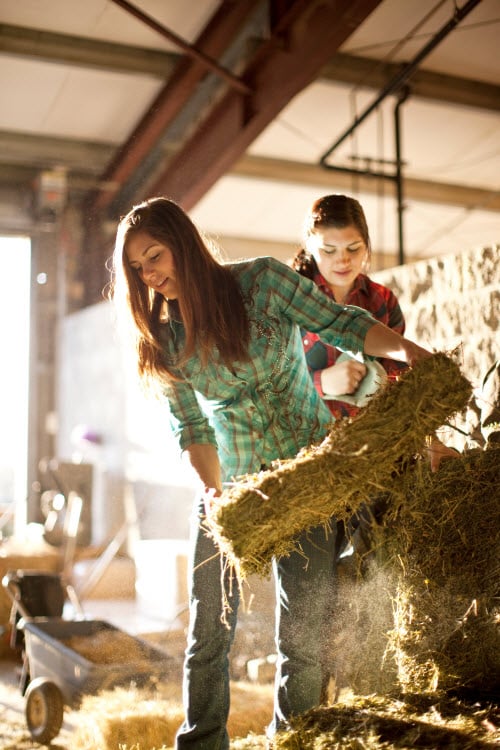
At that point, the grass will have a water-soluble carbohydrate level of at least 10 percent. This is the reason why silage has a higher water-soluble carbohydrate level than hay. However, the level of vitamins in silage will be lower than what you find in hay. That is because vitamins decrease in strength over time.
It has been shown that both grass and alfalfa offer higher levels of protein and energy when it is made into silage rather than hay.
Advantages to the Farmer of Making Silage Instead of Hay
Making silage offers many potential benefits over making hay to the farmer and his or her operation. Going with making silage instead of hay usually leads to decreased harvest losses and can lower food costs, as well. It also makes it easier to extract the highest possible level of nutrition overall from the land.
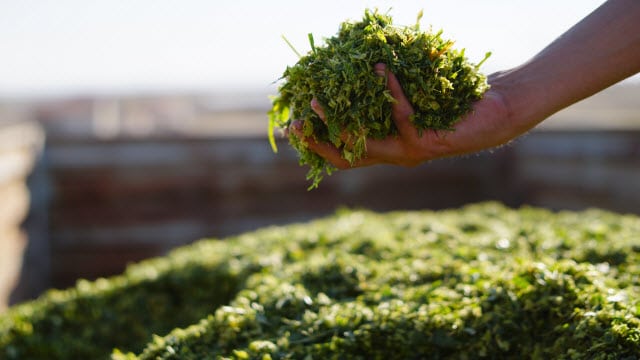
Be aware, though, that you will have to be especially careful to get the process right when you are making silage. That is because if you don’t successfully exclude oxygen from the bale, you will end up with mould and waste extremely quickly.
Hay vs Silage Comparison Table
| Moisture Content | Storage | Preservation | |
| Hay | Grass used for hay needs to be extremely dry. The maximum moisture level is around 12 percent. | Hay storage is simple and easy. It is stored in bales. | It is the extremely low moisture content of hay that makes it able to stay fresh. |
| Silage | The moisture content of silage is between 40 and 60 percent. In some cases, a moisture level between 62 and 68 percent is used. | Silage bales must be covered in layers of plastic wrap. This is necessary to keep out all oxygen. | The fermentation process that takes place in silage (this usually takes between 10 days and three weeks) is key to its preservation. |
The Differences Between Hay and Silage are Clear
While hay and silage are both made from grass, there are several important differences between the two that are obvious when handling each product. Hay and silage are prepared and preserved differently, and offer farmers unique choices in terms of how they will manage their flock and farm.
For most sheep farmers, the choice comes down to availability and cost.

